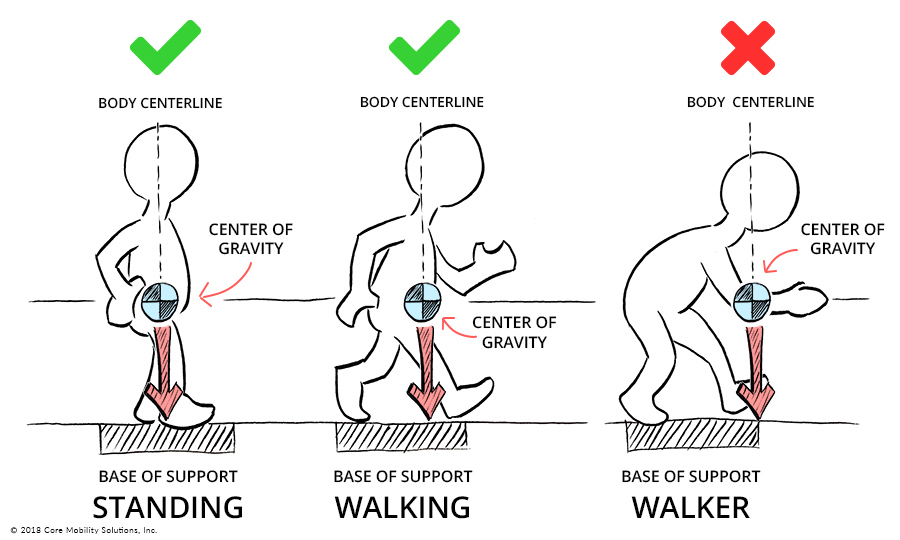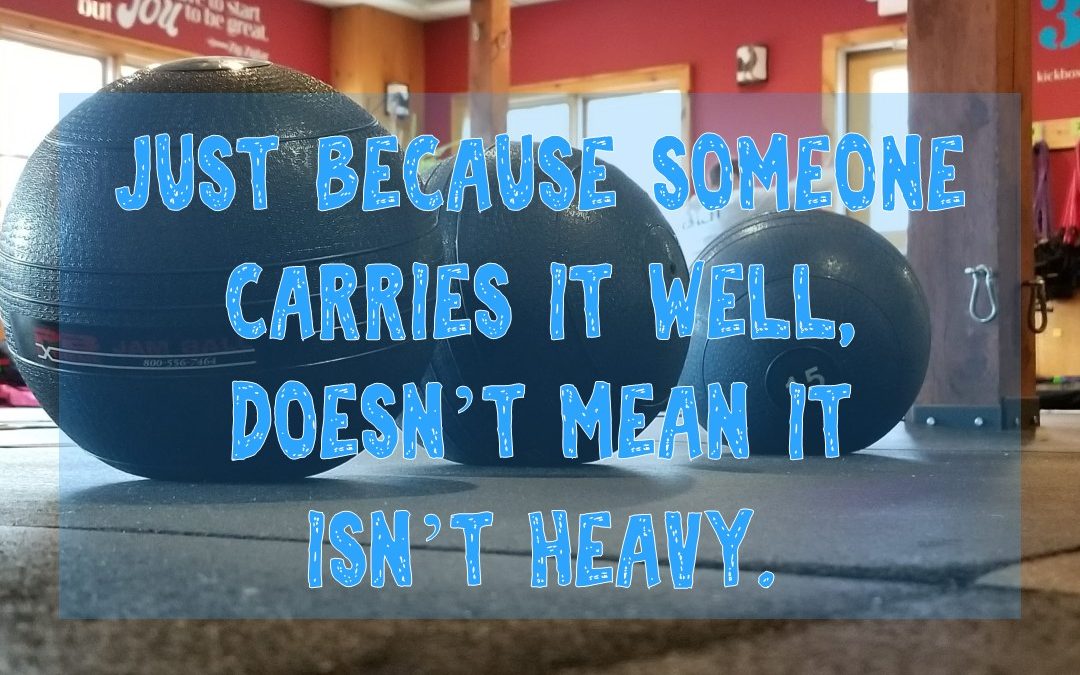For some reason when I hear the words “center of gravity”, I always think of outer space. Strange, I know – especially since bodies are my life! Anyhow, center of gravity – did YOU think of outer space? LOL! Ok, for real – are my shenanigans too much right now?
Because bodies are my life, I know a lot about them. It’s my job to know about bodies. The more I know and understand about bodies, the better Coach I will be. Knowing how your body works allows me to design exercise programs and progress them so your body will be the best it can be. When I change the load (i.e. sandbag, kettlebell) position to the upper body, I’ve moved it above the center of gravity and made it more difficult. It’s not that we just moved it to your upper body, which we did, but the reason is because it’s above your center of gravity.
Your center of gravity is the balance point in your body. It’s the point at which your upper and lower body weight is balanced. Typically, this is just below the belly button and half way between the lower back and belly when a woman is standing upright. For a man, it is slightly above the belly button. However, this point can move with changes in posture and body weight.

Remembering that the center of gravity is the balance point between the upper and lower body, if either of those variables change, the center of gravity changes. If a woman is pregnant, her middle extends outward thus her center of gravity moves forward. Similarly, if someone has a slumped over posture, the center of gravity is now outside of their body. When you walk and use your arms (part of your upper body), your weight is distributed a little differently so the center of gravity moves. Someone who does a lot of upper body weight training and less lower body will have a higher center of gravity. Changes in the location of your center of gravity can affect your balance and stability.
Proper strength training can help your balance when the location of your center of gravity shifts. Because the center of gravity is your balance point between the upper and lower body, you want to strength train both upper and lower body. It sounds counter-intuitive to strength train upper AND lower body, but believe me there are people out there that only train their upper body. They are left walking on twigs that can’t support the mass of their upper body. Keeping your core strong and tight can help keep your center of gravity centrally located within your body. In our program, we progress the location of the load (sandbag, kettlebell) to change the intensity of the movement by placing more weight above your center of gravity.
When we change the location of the load, we are changing the demand on the core. For example, let’s talk hip hinge. When doing a sandbag deadlift, the bag is hanging down against your shins with your arms extended. The weight is close to the knees so there is more weight in your lower body. Thus, your center of gravity is lower and your body is more stable (more weight closer to the ground). When we put the sandbag in the front loaded position and hinge, the weight is above your center of gravity. This makes the movement more demanding on your core and challenges your balance a lot more. The amount of weight you can front load is significantly less than what you can deadlift from a straight arm position. The same is true comparing a Kettlebell Goblet Squat and a Kettlebell Squat with arms straight down. You will always have better balance and be more stable when your center of gravity is lower to the ground.
Change up the placement of the load and you’ll feel the change in intensity. Remember to drive your feet into the ground, squeeze your glutes, brace your core, and breathe!

